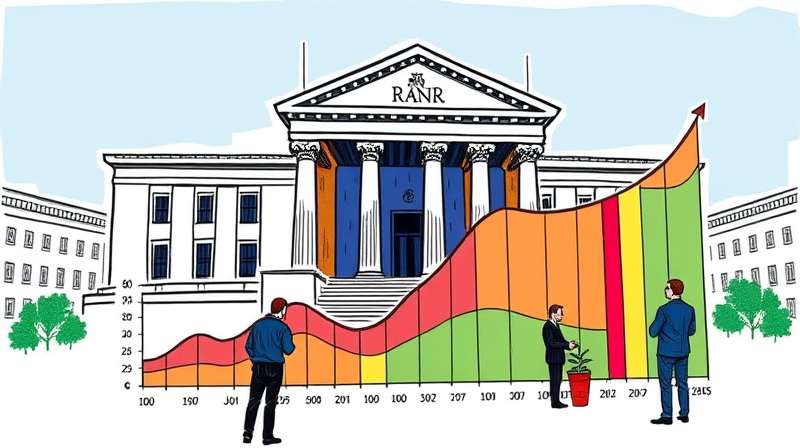
After a period of volatility and uncertainty, the cryptocurrency landscape has surged forward with renewed vigor. Market participants are witnessing an impressive rebound that is reshaping investor sentiment and signaling a potential new phase of growth.
Bitcoin (BTC) led the charge, rocketing above $106,000 after briefly dipping below $99,000 earlier in the week. This dramatic bounceback erased an 8% decline from the previous week, thanks to three straight days of gains fueled by both technical reversals and regulatory relief.
Meanwhile, Ether (ETH) rallied to $2,400, with analysts forecasting short-term targets between $2,600 and $2,800. Longer-term projections for ETH are even more optimistic, with some forecasters eyeing levels near $5,500 as institutional flows and decentralized finance protocols continue to expand.
Other major tokens also enjoyed robust momentum. Tether (USDT) maintained its peg amid heightened demand for stablecoins, while Ripple (XRP) and Binance Coin (BNB) climbed steadily on increased trading volume and optimistic network upgrades.
Technical charts and blockchain data are reinforcing the bullish narrative. Bitcoin’s weekly candlestick chart recently formed a bullish engulfing pattern, a classic signal of market reversals. At the same time, exchange reserves hit a decade low, hinting at a potential supply squeeze if withdrawals outpace deposits.
Trading volume on centralized exchanges has dropped to levels unseen in ten years. While some interpret this as waning retail interest, many analysts view it as reduced selling pressure that could pave the way for new all-time highs.
A recent V-shaped recovery saw BTC bounce above $105,000 in under 48 hours following a sharp sell-off, underscoring its liquidity and growing integration into mainstream portfolios. On-chain metrics also highlight a rise in long-term HODLing, suggesting that seasoned investors are capitalizing on lower price levels.
A landmark update from the FDIC on March 28, 2025, removed the prior-approval requirement for crypto activities at FDIC-supervised banks. This overturned a 2022 restriction and streamlines compliance for regulated entities looking to offer digital asset services.
In parallel, political pressure from the House Committee on Financial Services pushed for more balanced policies, reflecting bipartisan recognition of crypto’s role in modern finance. While the FDIC clarified that deposit insurance still excludes direct crypto holdings, the move has been widely hailed as a major step toward normalization.
The impact on institutional flows has been immediate:
These trends underscore ongoing institutional demand and suggest that the recovery is underpinned by structural forces, not mere speculation.
Crypto’s rebound has coincided with a broader risk-on environment. A tentative ceasefire in the Middle East, coupled with dovish remarks from Fed Chair Jerome Powell, has lifted sentiment across equities and digital assets alike.
The Federal Reserve held interest rates steady at 4.5% in June 2025, signaling that an eventual pivot toward rate cuts is still on the horizon. This stance has reduced pressure on risk assets and reinforced the notion that crypto can thrive in both inflationary and deflationary scenarios.
The Nasdaq 100 set fresh records, and Asian markets rallied in unison, illustrating a synchronized move into higher-beta assets. Bitcoin’s summer performance is now on track to break its three-year pattern of sluggishness during the warmer months, driven by marathon ETF accumulations and elevated market optimism.
Market strategists remain bullish on the back of regulatory clarity and steady ETF inflows. Bitget Research chief analyst Ryan Lee projects Bitcoin could trade between $110,000 and $115,000 in Q3 2025, potentially reaching $130,000 to $160,000 by year-end.
Ether’s institutional adoption and the rise of layer-2 solutions further bolster its case for a breakout toward $3,000 in the coming months. Long-term targets as high as $5,500 reflect broad confidence in Ethereum’s role in decentralized finance and non-fungible token ecosystems.
However, seasonality remains a wildcard. Historically, crypto markets can experience heightened volatility during summer months. Investors should remain vigilant, balancing long-term strategic positioning with tactical risk management to navigate potential pullbacks.
Geopolitical flare-ups or unexpected regulatory reversals could trigger short-term corrections. Yet with major banks now free to engage in crypto activities and ETF flows sustaining price floors, the market structure appears more resilient than ever.
For those looking to capitalize on the recovery, consider the following guidelines:
By combining disciplined allocation with a clear understanding of macro drivers, investors can position themselves to benefit from the ongoing crypto resurgence.
The recent market bounce is more than a fleeting moment—it represents a fundamental shift toward mainstream acceptance and institutional embrace. With regulatory hurdles lowering, technical setups improving, and macro conditions supportive, the path ahead for cryptocurrencies looks brighter than ever.
References













